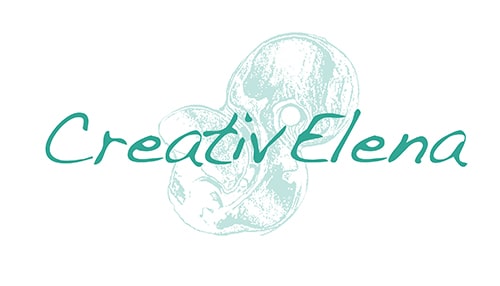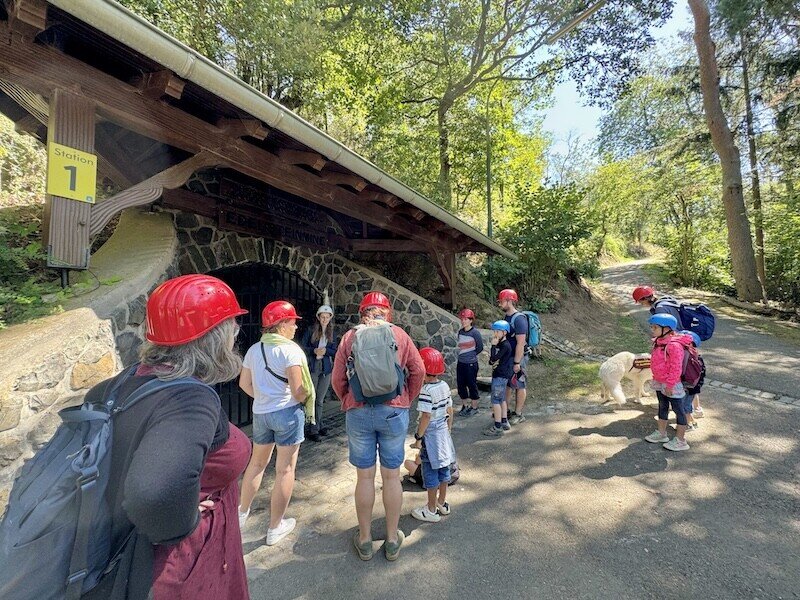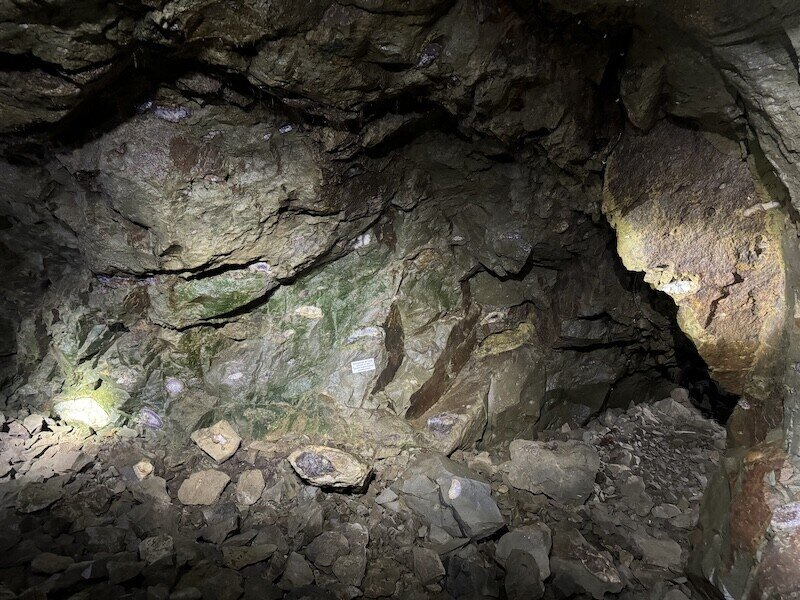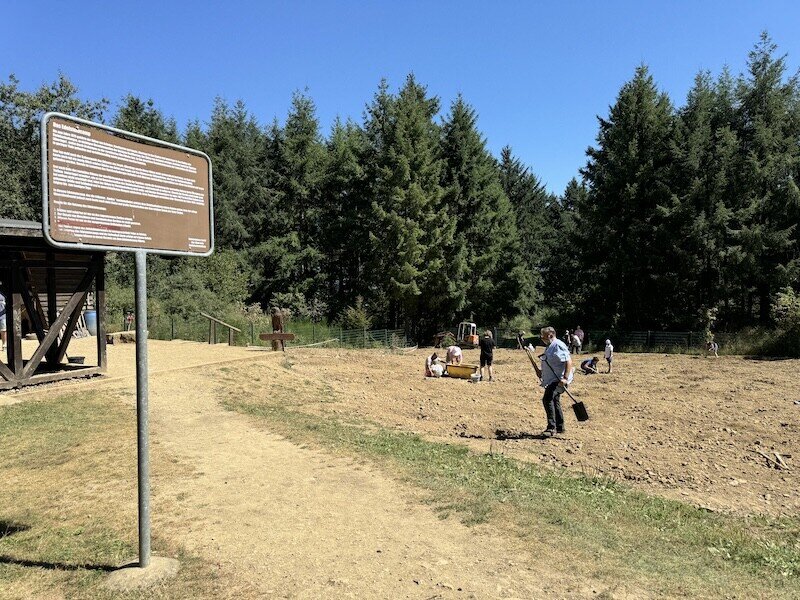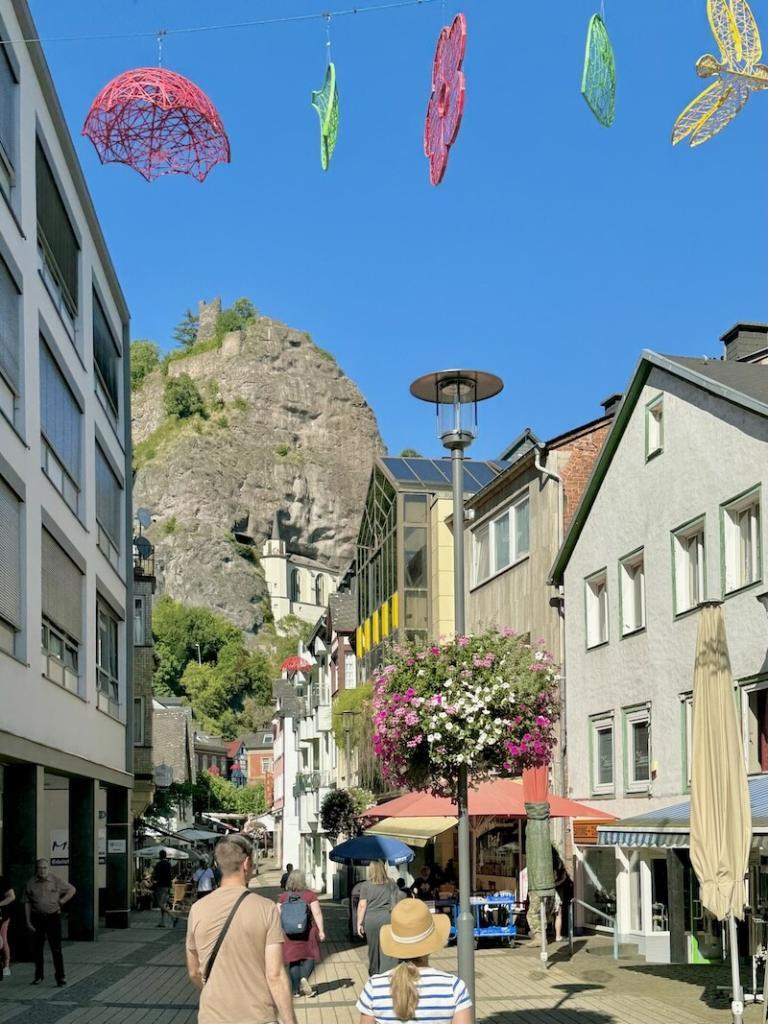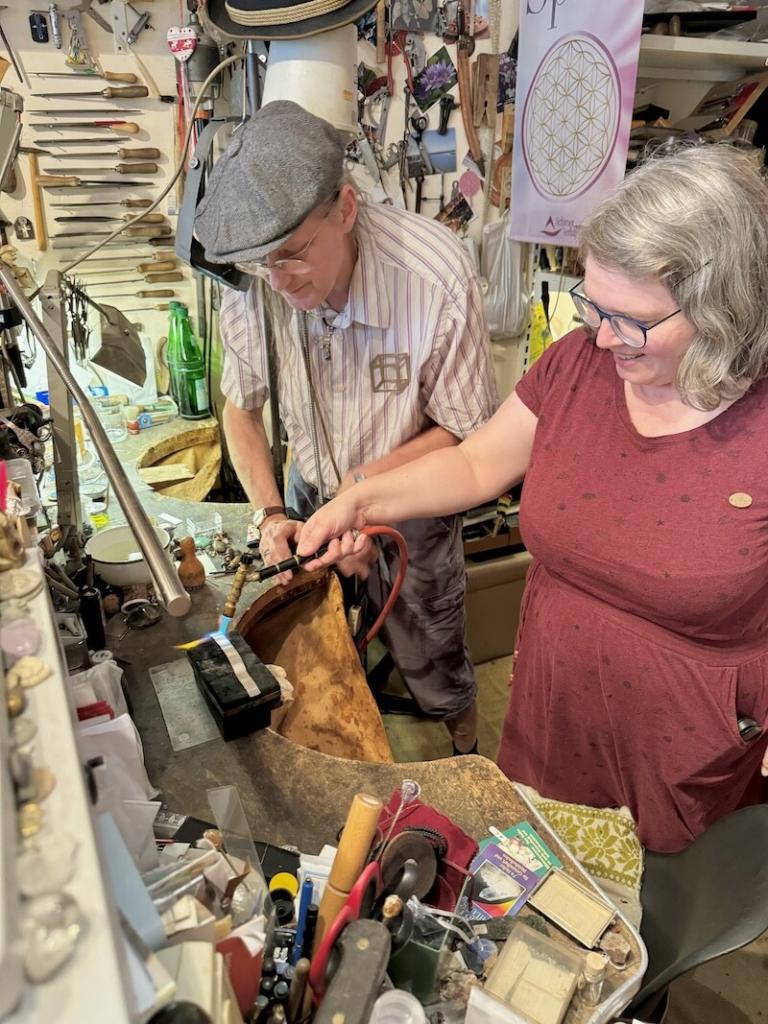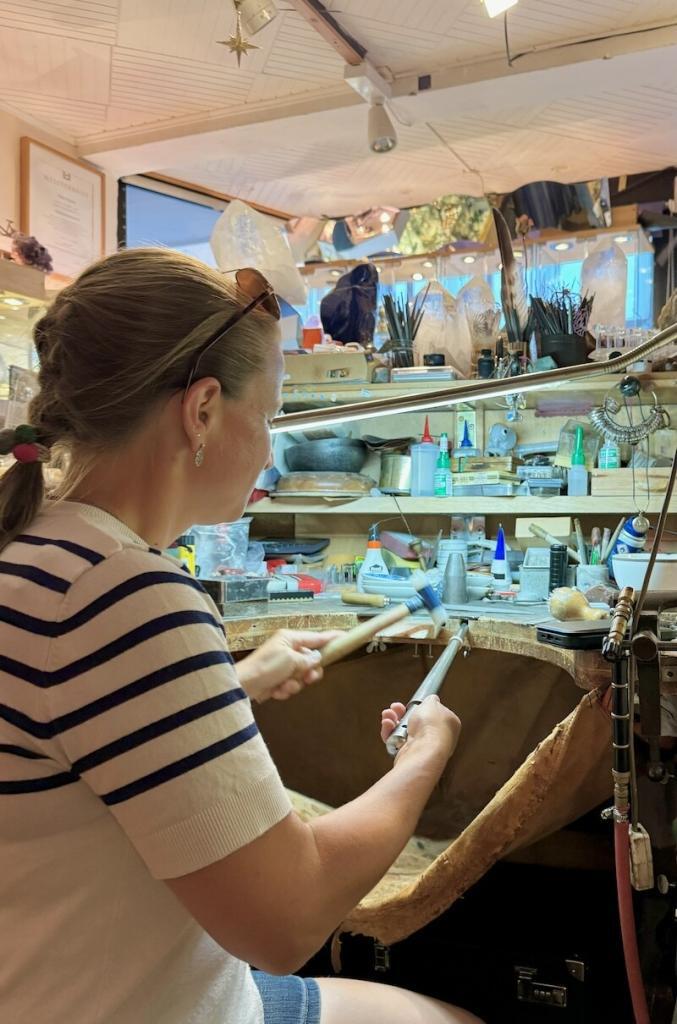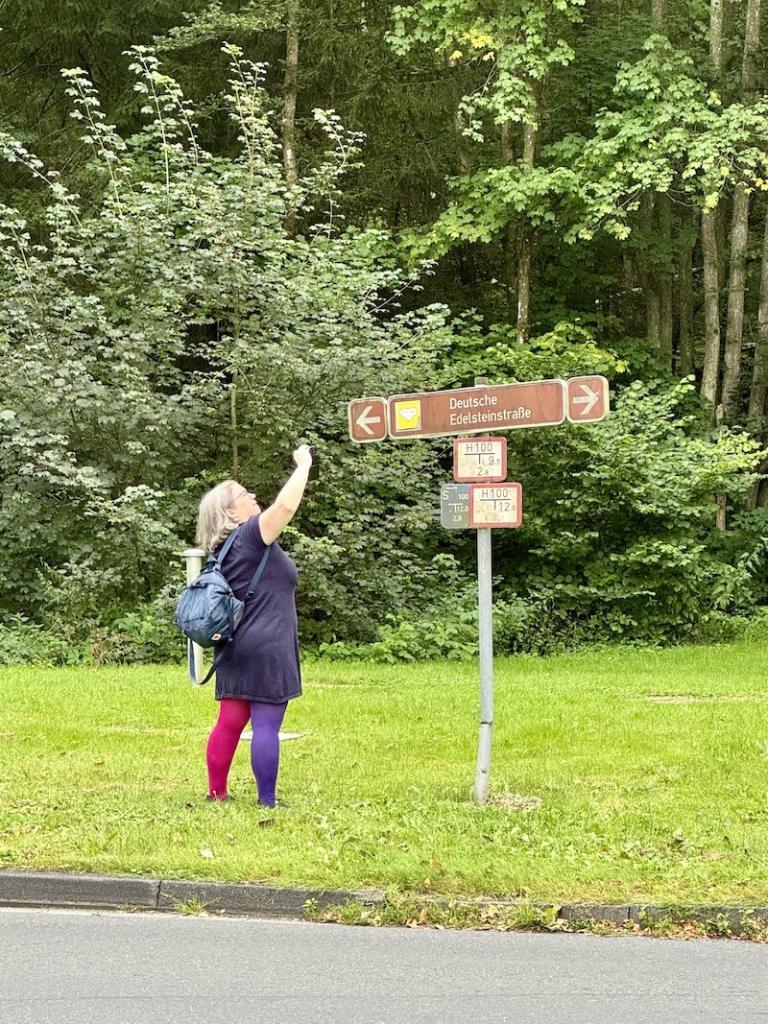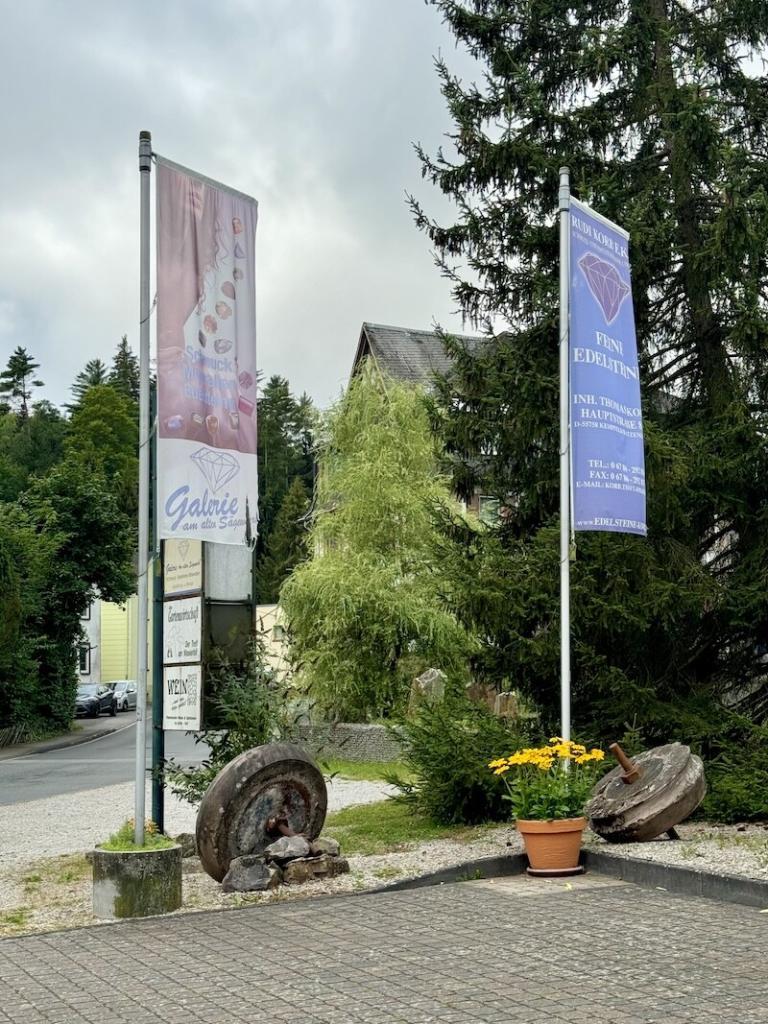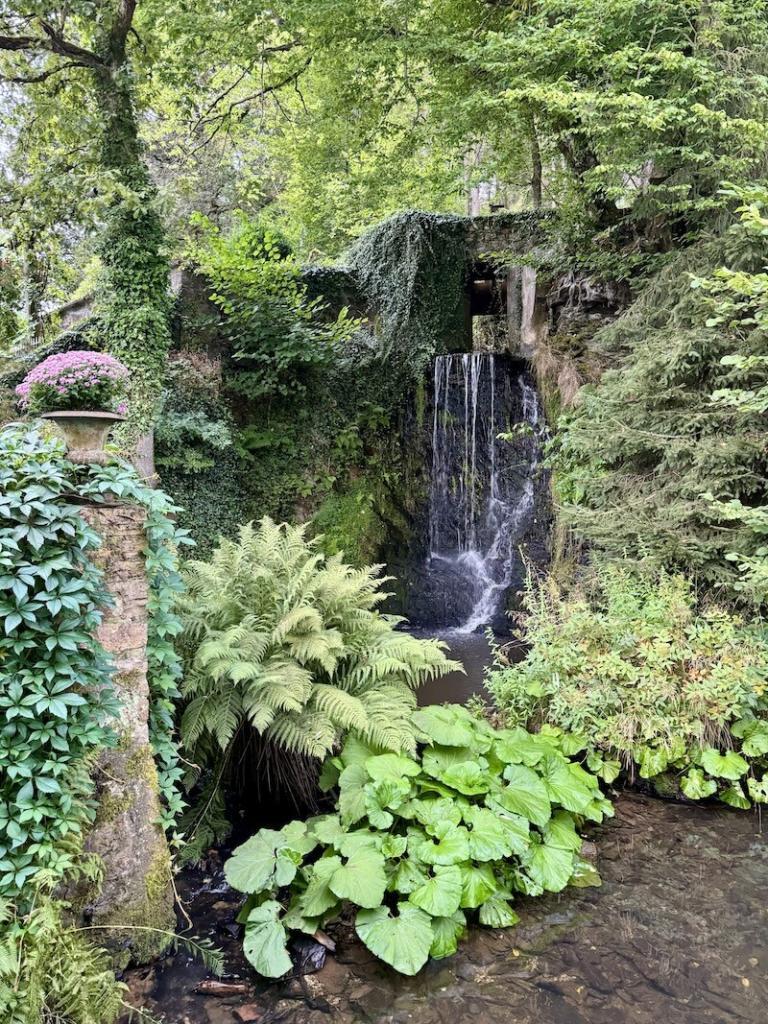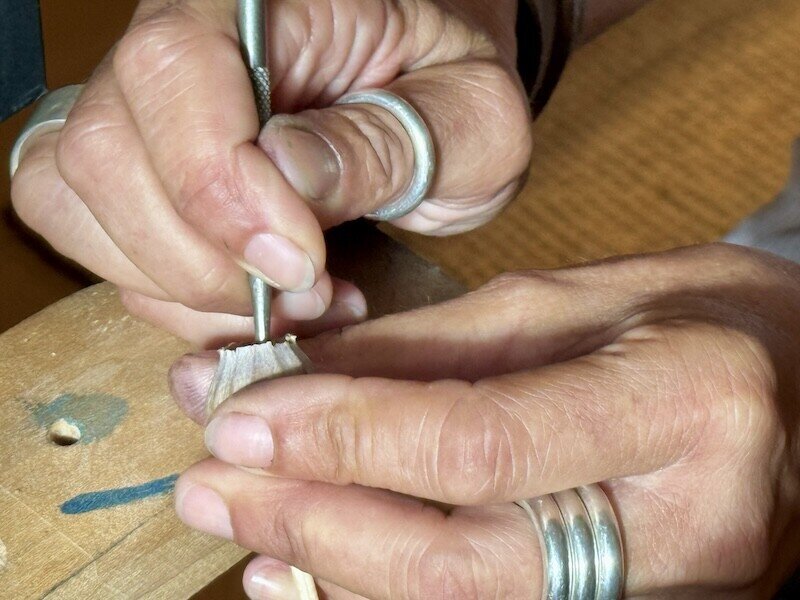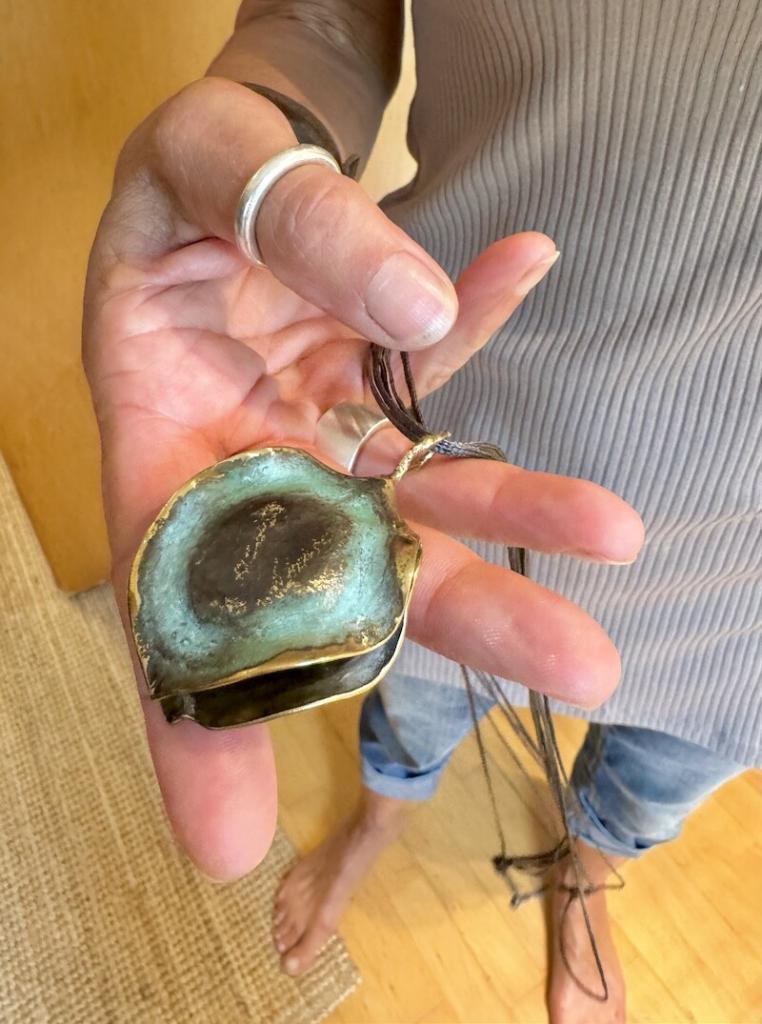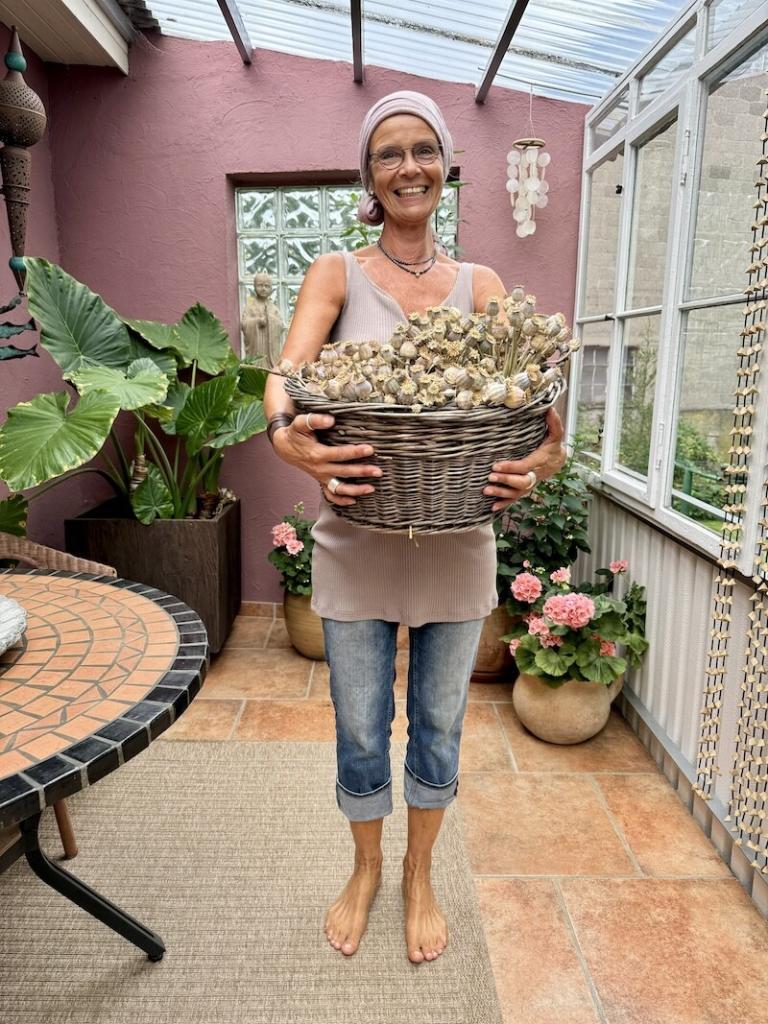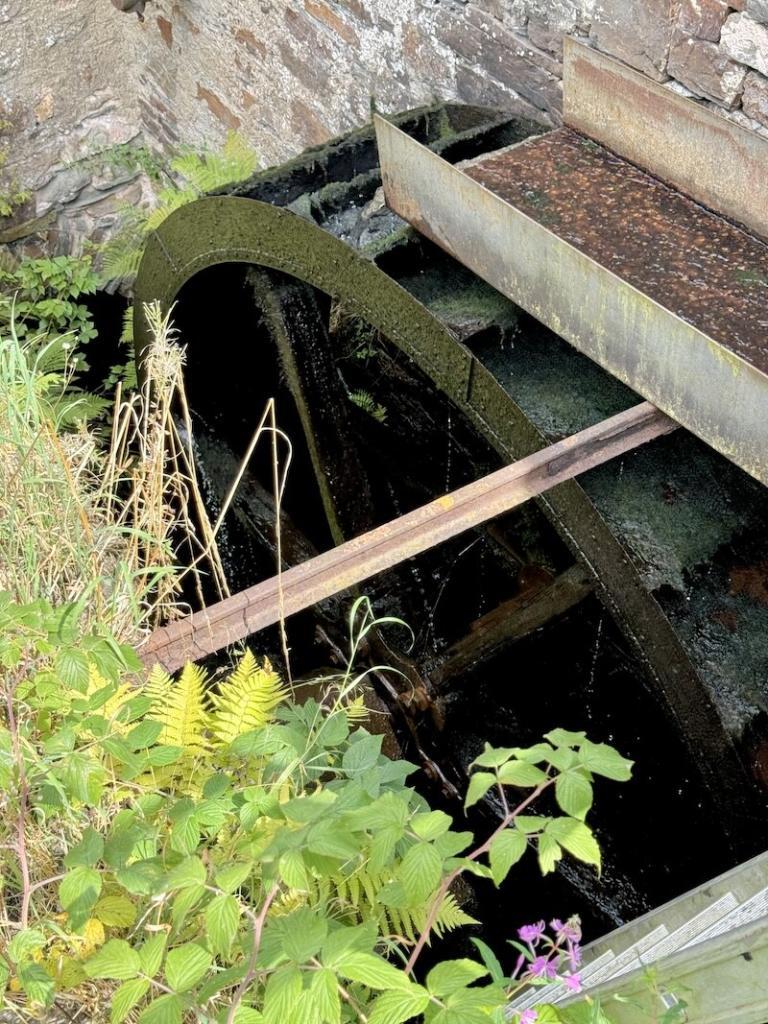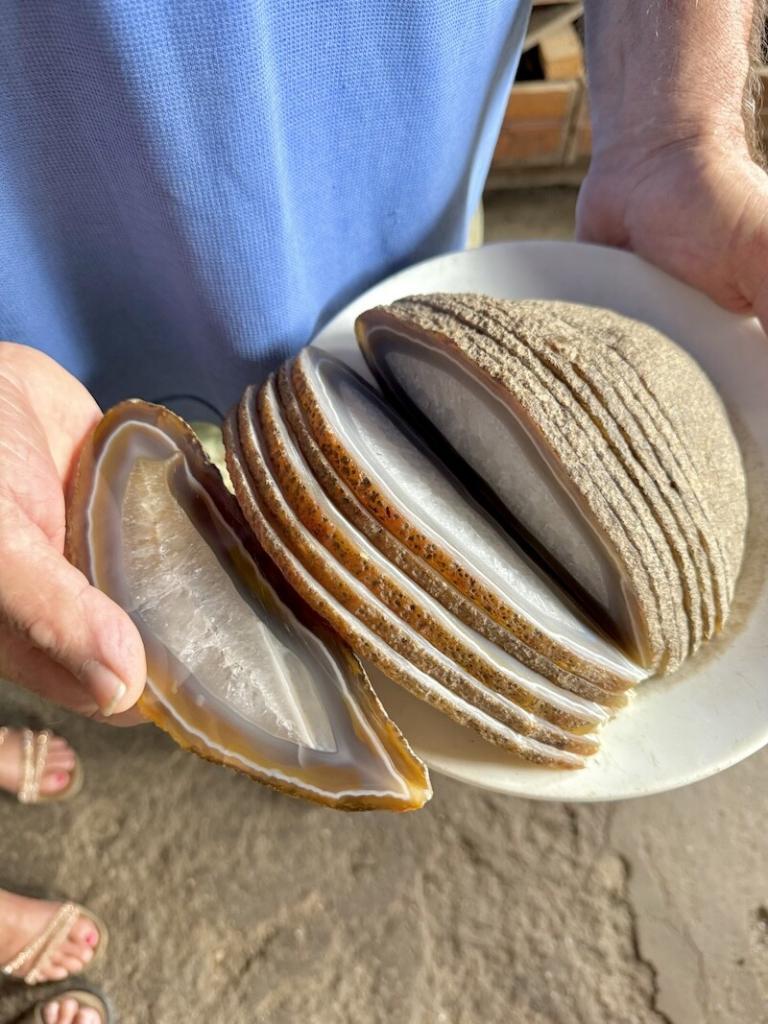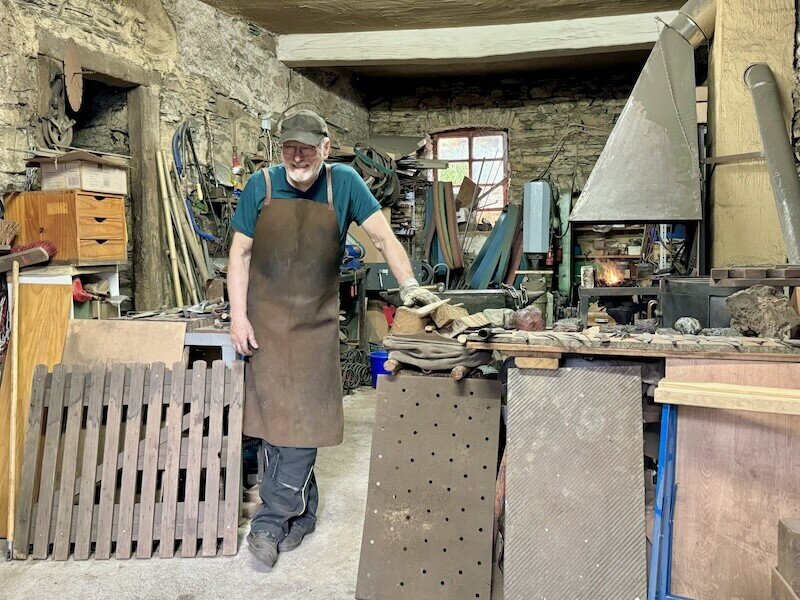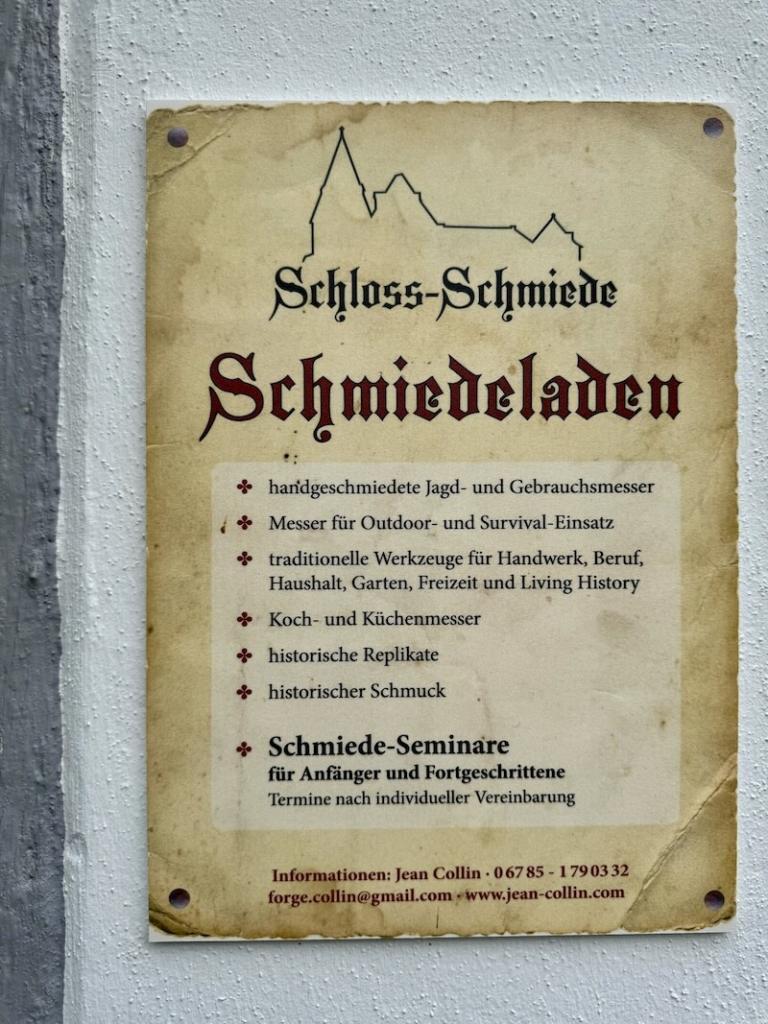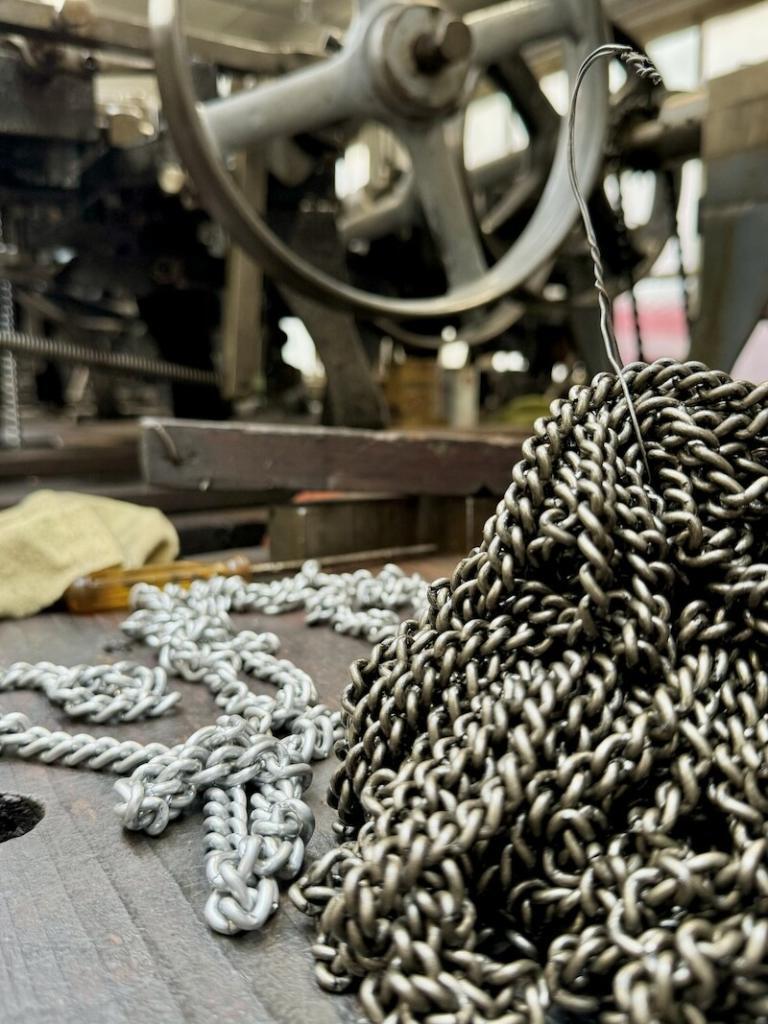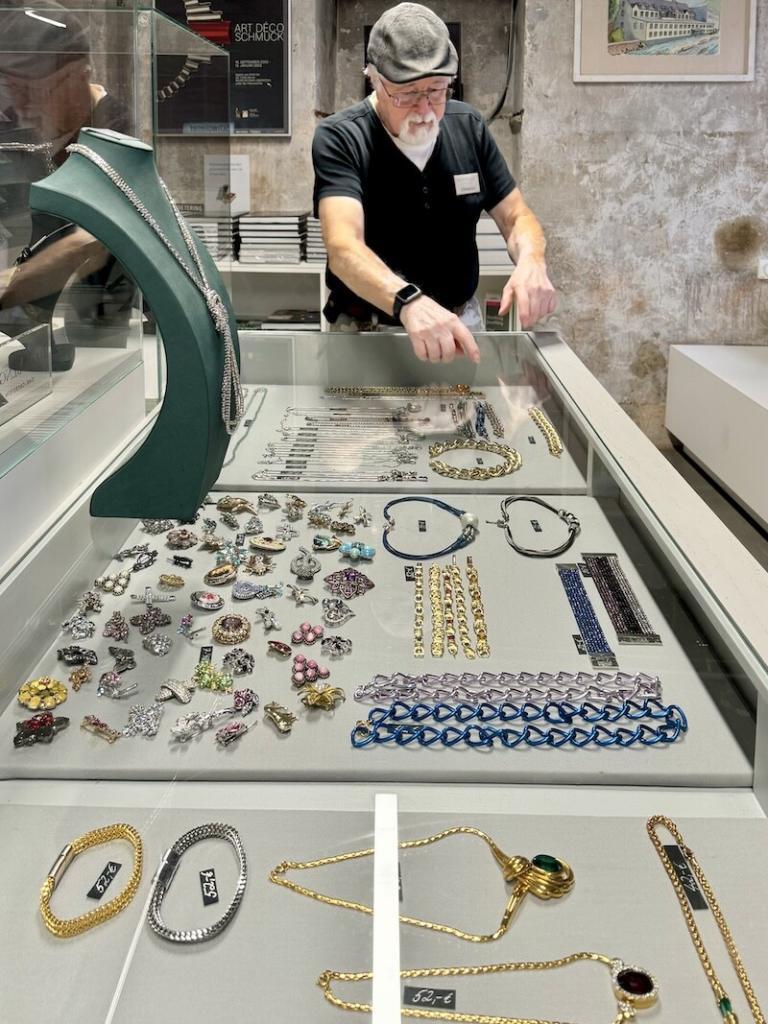When was the last time you became really creative with precious stones and gems?
If the answer is never, you can try out news things in the southwest of Germany, where the so-called “EdelSteinLand” (gem stone country) brings together many artists and creative people. I have already written about how to get there, as well as where to stay and eat, in a previous post about the area and its famous Villa Horbach.
Today, I would like to tell you more about the opportunities for #CreativeTravel in and around Idar-Oberstein, the epicentre of the dazzling stone worlds of the EdelSteinLand gem stone country.
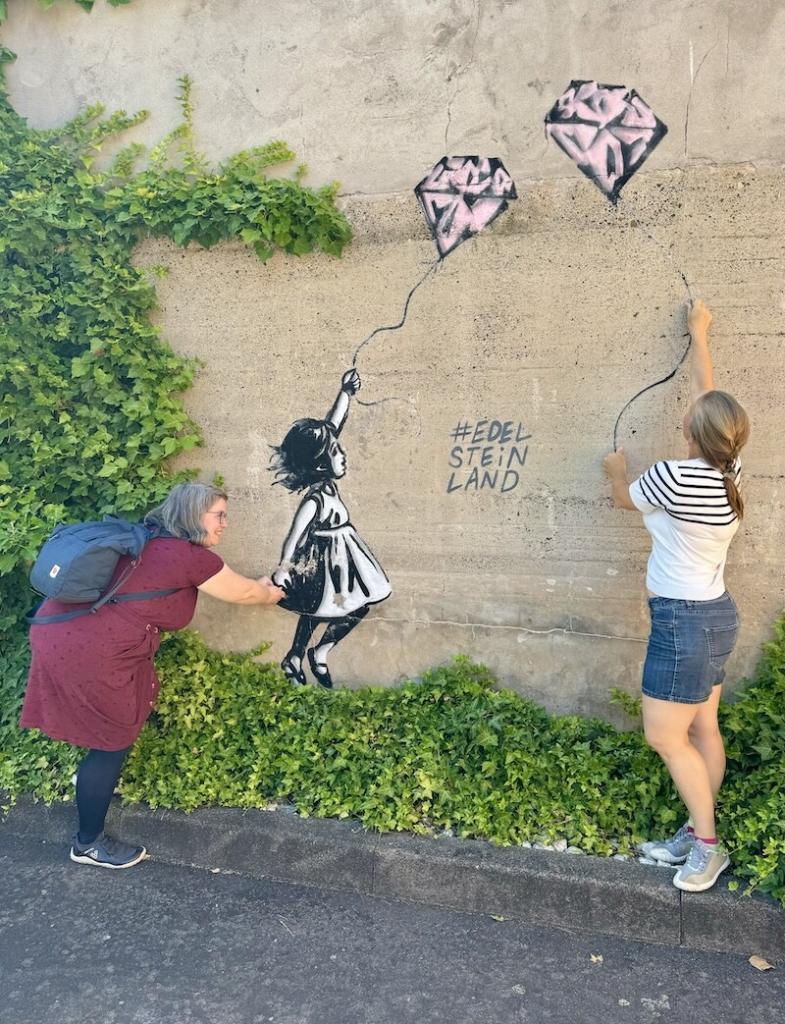
Hello, gem stone travels! Janett and I discover cool street art graffiti on the back of the German Gemstone Museum in Idar-Oberstein.
Visiting the gem stone mine in Idar-Oberstein: Diggin’ it!
We begin our creative journey of discovery in Idar-Oberstein with a visit to the local gemstone mine – and a really interesting history lesson. Because before the precious stones had their “coming out” here, our young mine guide Pauline reveals “just how gemstones were created here in the first place.”
Millions of years ago, the present day gem stone area consisted of molten lava. Once this had cooled as hard rock, gas inclusions were repeatedly found in the lava rock, which formed the cradle of gemstones: Beautiful agates, but also amethysts, smoky quartz and rock crystals were formed over the course of millions of years.
In the middle of the mine, we are amazed at how many gemstone inclusions there are here in the mountain; there is even a digging field outside where kids are guaranteed to find something!
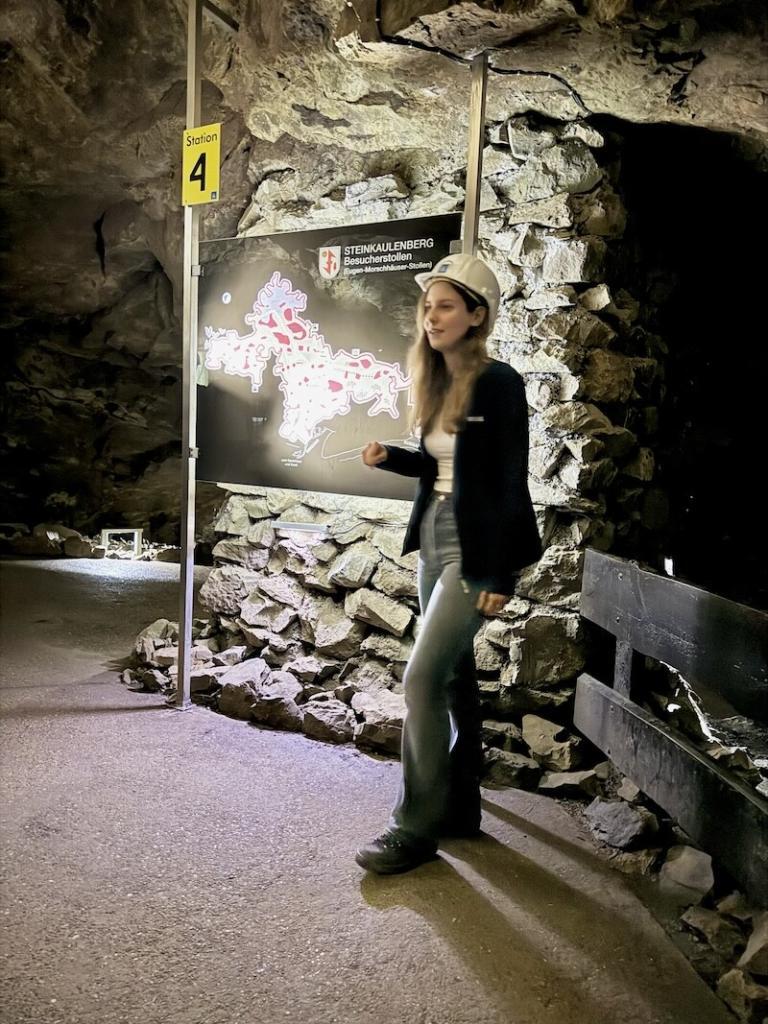
… thank you so much, dear Pauline, for your interesting insights on the history of gem stones in Germany.
Gem stone museum with street art graffiti.
Not far from the gemstone mine in Idar-Oberstein, you can visit the town centre and museum. It is worth taking a guided tour to learn even more exciting details about all the gemstone artefacts found. Don’t miss street art graffiti at the back of the building!
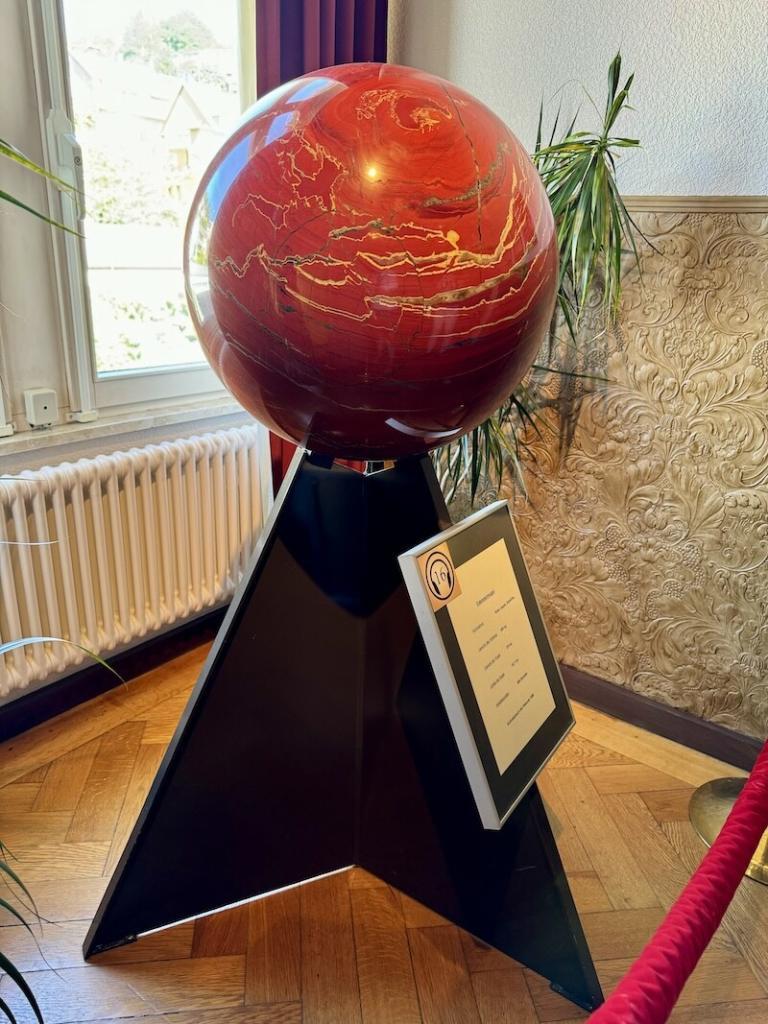
… and our visit to the gem stone museum, which houses exhibits that are unrivalled anywhere in the world – like this perfectly shaped, precious sphere.
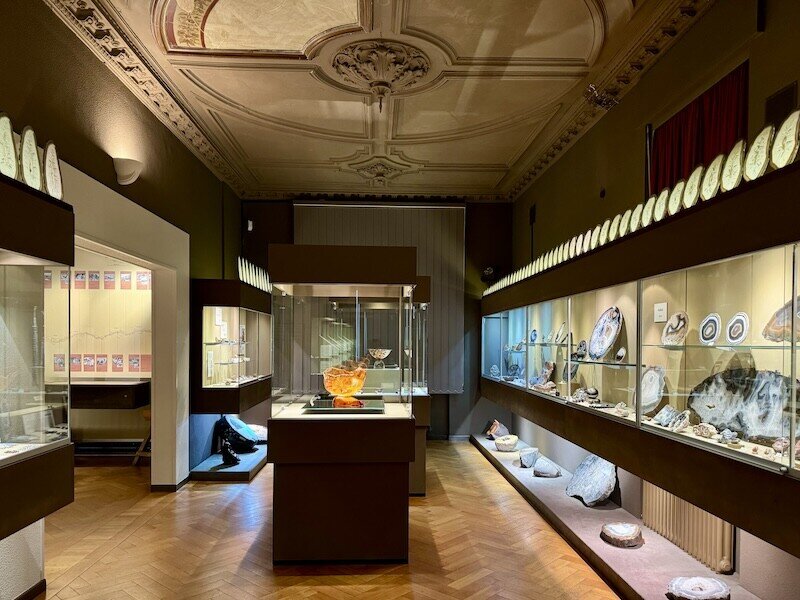
The entire museum is worth a visit to learn more about the history of gemstone processing in Idar-Oberstein and the surrounding area.
In just two hours, we forge our own friendship rings with Peter Fischer in Idar-Oberstein.
On the same day, another highlight of our creative journey to the German gem stone country awaits Janett and me: we are booked in with the silver, gold and art blacksmith Peter Fischer to forge silver friendship rings!
Now, I’m not entirely inexperienced in silversmithing: 16 years ago (!) I once forged my own silver ring in New Zealand, at the Christchurch Arts Centre, and have worn it every day since. So some of the techniques Peter explains to us really do ring a bell.
And yet, forging our own rings with Peter, it is again completely different. Peter, who originally comes from Graz in Austria, works as if he has more than two hands. He knows every little tool in his crammed workshop by name and place. Janett and I are completely fascinated by how, thanks to his guidance, we are able to create beautiful friendship rings in just two hours.
Check this out.
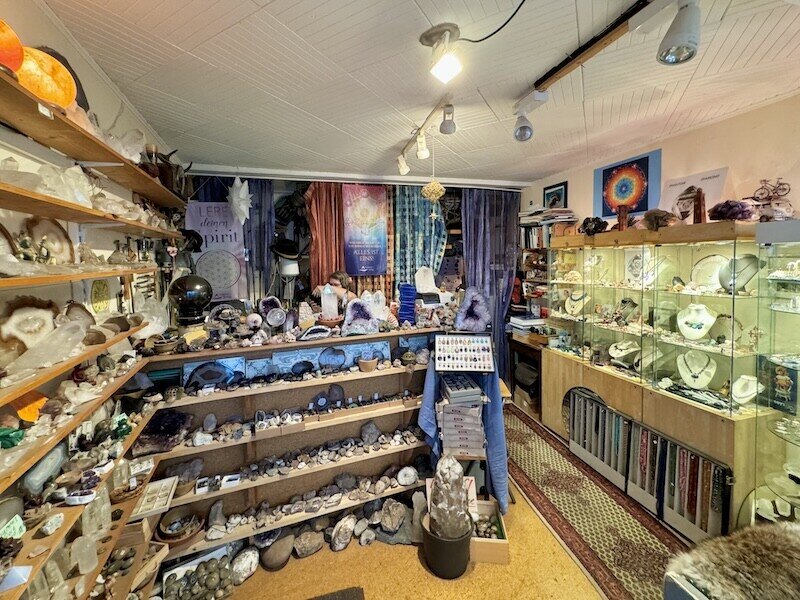
Welcome to Peter’s world. As an artist blacksmith, he certainly lives in his own personal Eldorado here.
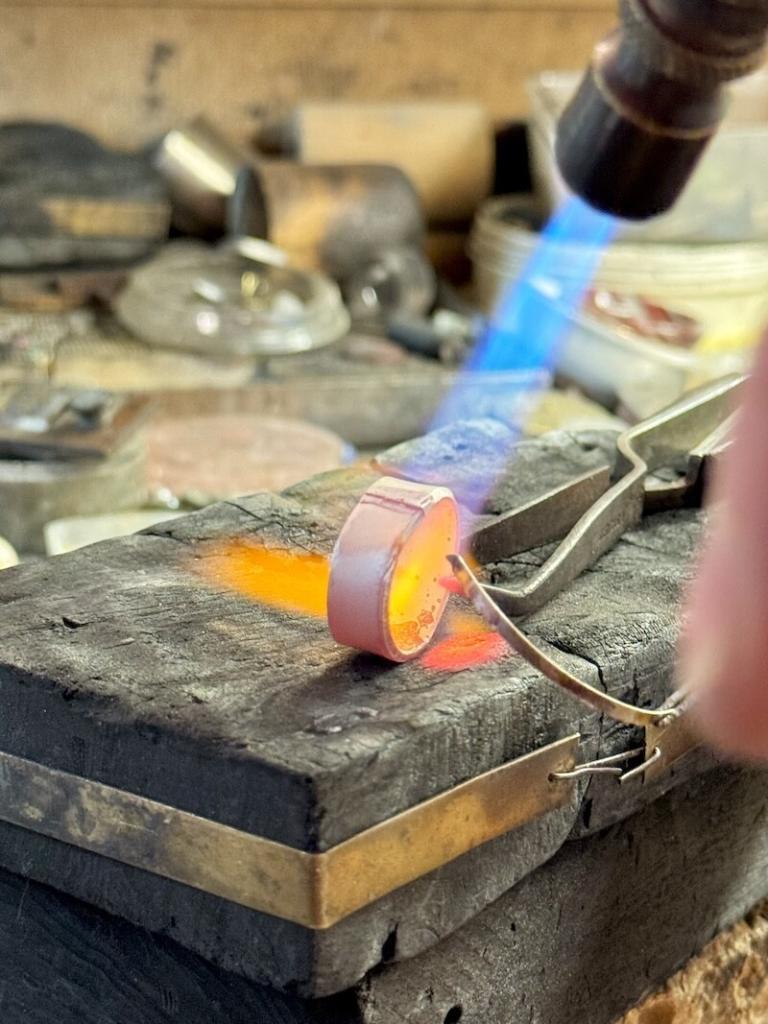
It is interesting how many steps are necessary to forge two simple silver bands into skilfully crafted, personalised rings.
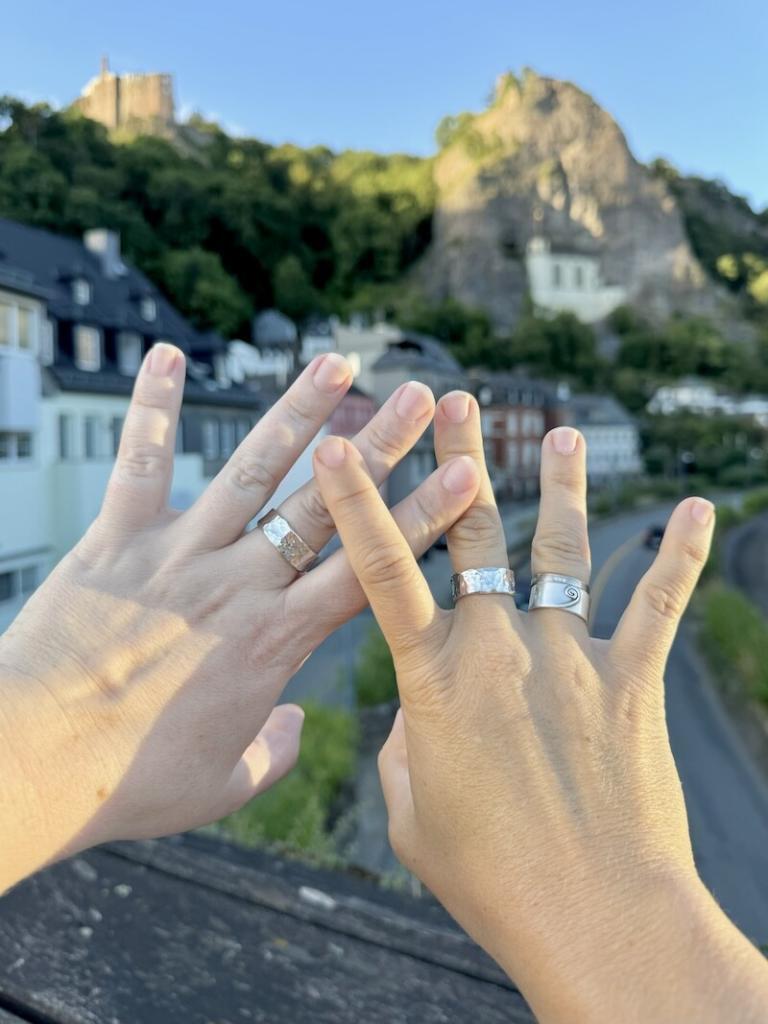
Et voilà: The result of our creative workshop with Peter Fischer in Idar-Oberstein. The photo shows the town’s famous rock church in the background – you can read more about it in my article about Idar-Oberstein.
Visiting Simone Drechsel and her poppy jewels: “Nature is the best artist.”
The next day, we drive a short distance along the so-called Gemstone Road to visit Simone Drechsel in the small village of Sensweiler. Simone has set up a workshop and showroom in her own home, where she tells us about her fascination of working with nature.
Her jewellery pieces tell the story of a special connection with the flora around her, especially poppies and poppy capsules. The latter serve as the basis for all kinds of specially designed pieces of jewellery – the name “Mohnjuwelen” (poppy jewels) was born.
“Turning poppies into jewellery is like the crowning glory of my artistic creation. Nature is simply the best teacher and inspiration for me as a jewellery designer.” The works of art and jewellery, which are very delicate on the one hand and very expressive on the other, inspire Janett and me; when we take a walk in the garden behind the house, it feels as if we have known Simone for much longer.
So if you are looking for the famous close contact with the locals (artists), visiting Simone Drechsel is just the right choice.
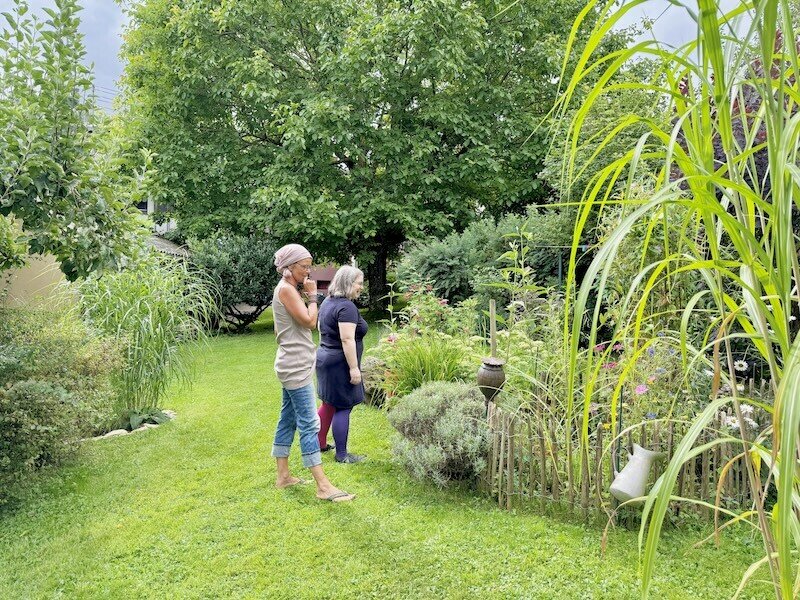
A little further on, in Sensweiler, we visit the artist Simone Drechsel in her garden, house and workshop …
Time warp visiting Ernstotto Biel, one of the last water gem stone polishers around.
Not far from Sensweiler, close to the famous medieval town of Herrstein and right next to the Harfenmühle campsite, we meet Ernstotto Biel at his ancient grinding workshop. The senior gentleman has the same sparkle in his eyes as the precious stones that he restores to their former lustre in his time-honoured workshop.
Amazing to watch how his entire facility runs solely on water power from the nearby river – almost completely without electricity and, if so, “it’s with light bulbs that have already worked for Thomas Edison” he laughs as he welcomes us.
Ernstotto Biel demonstrates how, for centuries, water grinders have painstakingly cut gemstones while lying in front of large, water-powered grinding stones – a tremendous effort that seems completely alien to us in today’s post-modern and fully automated world. Yet it was all just a few generations ago, as Ernstotto Biel emphasises when he talks about his father and grandfather. Unbelievable. Janett and I marvel at the journey through time that unfolds before our eyes.
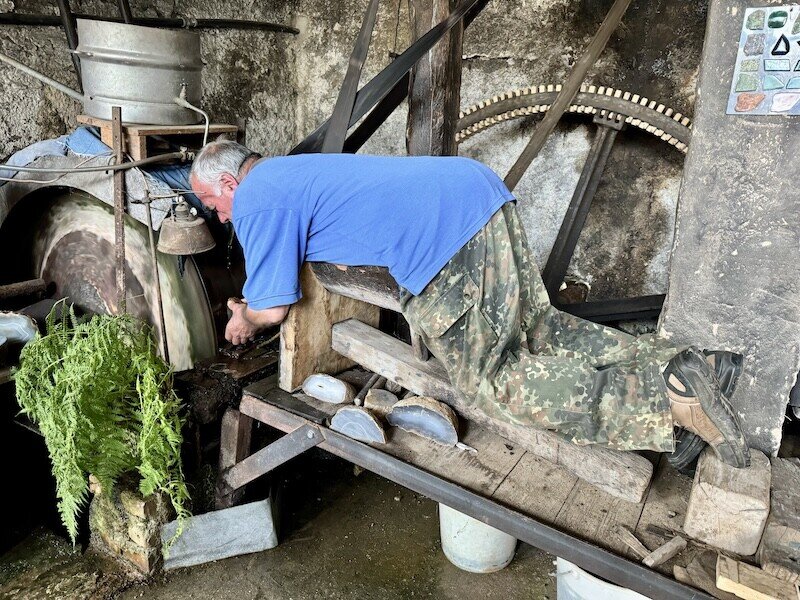
Here, Ernstotto Biel demonstrates how people have cut gemstones over the centuries, first roughly and then finely, thanks to water power.
Creative travel in Herrstein: Watching the talented knifesmith Jean Collin at work.
“Dungeon, that sounds just so much more exciting than cellar door, doesn’t it?”
Jean Collin, another passionate craftsman we meet here in the German gemstone country, grins mischievously as we point to the cellar door in his workshop – it says Dungeon in bold medieval lettering. “The children in particular love the story”, he continues cheerfully, gesturing for us to take a seat in the centre of his workshop.
Jean is a passionate cutler and experimental archaeologist. He moved here specifically because of Herrstein’s reputation as a place for artists, craftsmen and cultural workers. His forge is located directly on the town hall square opposite the Schinderhannes tower. We visit him “historically charged” after an exciting tour of the medieval village of Herrstein.
In his workshop, it becomes clear that you can learn a lot from Jean Collin; under his guidance, you can experience and take away a lot from forging artistic and useful objects.
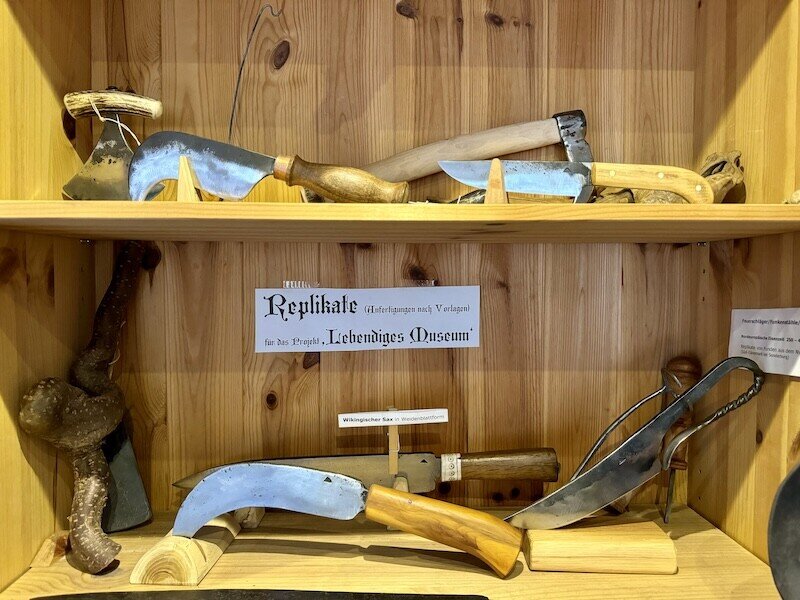
Be sure to visit the showroom above the workshop with him. Here you can see the true creative diversity of the artist, who often finds his inspiration in historical models.
A new take on an industrial monument: the Jakob Bengel chain and jewellery factory comes to life for us.
Last but not least, Janett and I visited a very special industrial heritage site: One of the world’s first fully automated jewellery and chain factories right here in Idar-Oberstein! Now you might be tempted to think: What’s so special or artistic about … a necklace? Well, you have to realise that over 150 years ago there simply weren’t any! And the initial impetus was actually to make one for the pocket watches that had just become fashionable.
Here too, as at the other sites of creative craftsmen in the German gemstone country, we fall under the storytelling spell of factory manager Wolfgang, who manages to convey the revolutionary invention in just a short space of time. It was as exciting as this: machines could suddenly produce chains. On the assembly line. In unprecedented quantities.
The inventors soon recognised the potential of ever finer chains as jewellery, and the rest is history, so to speak – of the kind that is once again coming to life before our eyes.
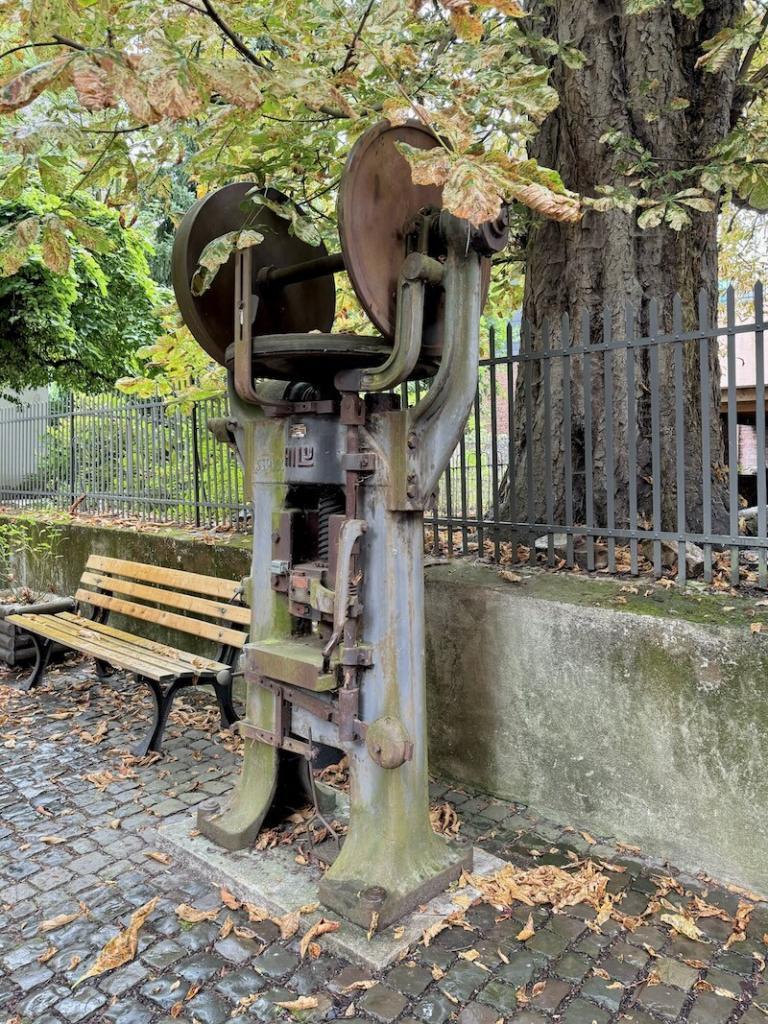
This punching machine weighing several tonnes welcomes us in front of the old factory of the Jakob Bengel family.
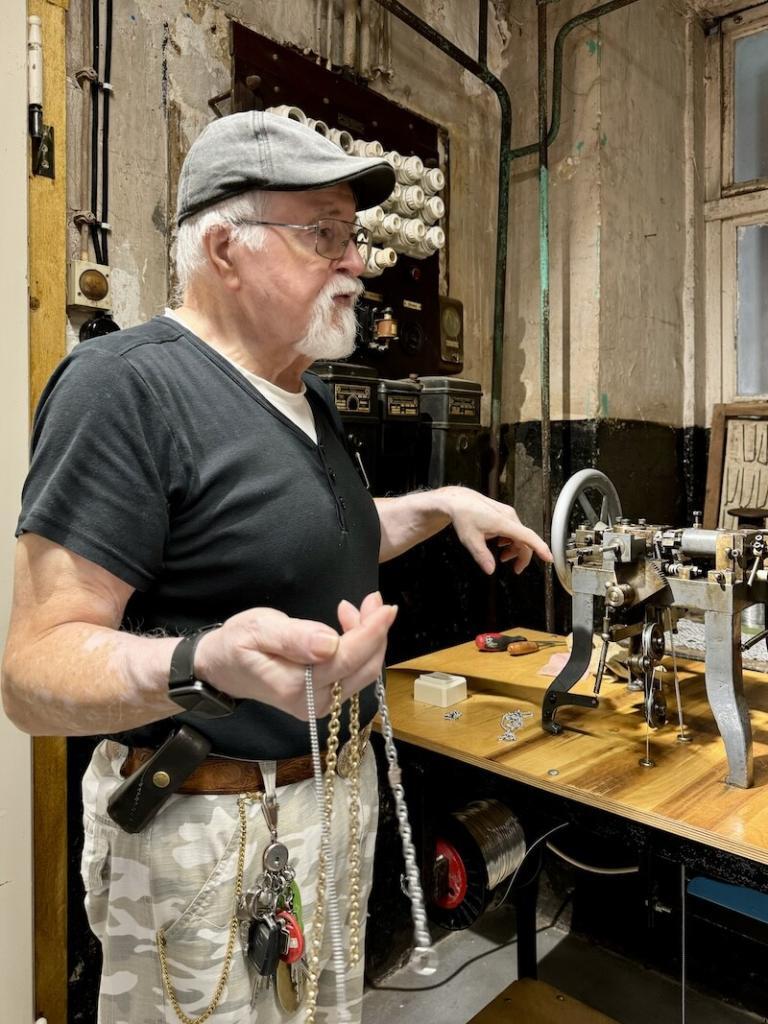
Wolfgang is very keen to tell us about the history and significance of the chains that were once made here …
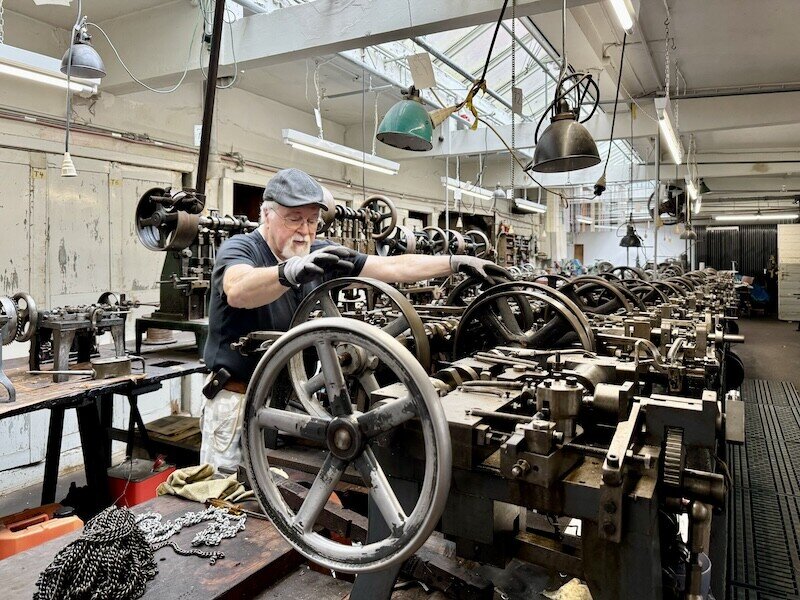
… we only really understand how revolutionary and significant this was when he brings the hundred-year-old machines back to life …
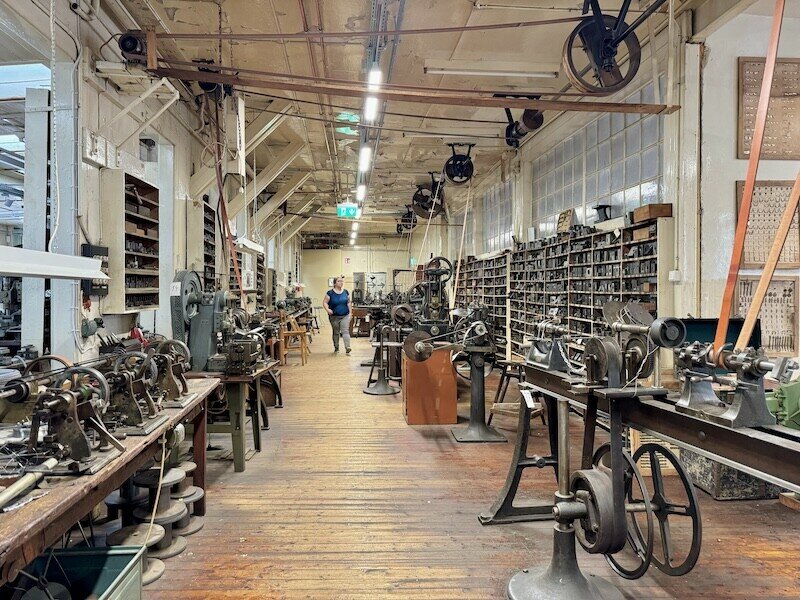
… we were also impressed by the fact that we were allowed to go everywhere in the former factory premises – from the workbenches here to the old office, where everything still looks as if someone had just dropped the pen.
Disclaimer: We have been invited on this trip to the German gemstone country and Idar-Oberstein. All opinions are my own.
